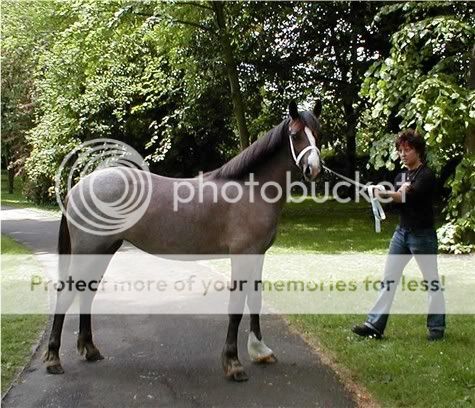Greys first, because they're nice and easy to understand.
Grey acts as a dominant gene, and some consider it technically not a colour gene but a colour-replacing gene. A horse only needs one copy of grey to go grey. Greying is not related to age - horses that will go grey show signs of doing so as early as six months old, when they start to shed the baby coat.
Interestingly, foals that will go grey are often born a deeper colour than those that don't. For example; a bay horse will usually be born with fawn coloured legs - it's only when they shed the foal coat that the black points show up. A bay foal destined to go grey will often be born with a deep bay coat and black legs.
Greys don't just grow white hair - the first stage of the greying process also adds black hair, so some colours will appear to get darker instead of lighter as they grow.
All greys, if they live long enough, will end up white. They will go through a variety of interesting stages to get there though. The first signs are often no more than a sprinkling of white hairs, leading to some confusing their grey for a roan.
Steel greys develop from black horses; rose greys from horses with a red base. At this stage, they are still easy to confuse with roans.
Next stage is dapple grey - by this point it's obvious that a horse is going grey, and not a roan. Some horses remain dapple grey (sometimes quite dark too) for years, while others are completely white by six or seven.
Some greys that have gone white will then develop flea-bitten markings, where they show freckles of black or brown.
Some pictures of grey....
First is Gelfy when we first has him. His body was still very brown - almost roaned, to look at - but note how although his body and points might fit the roan description his face is much whiter. If he'd been roan, his head would have had little or no white on it at all.







